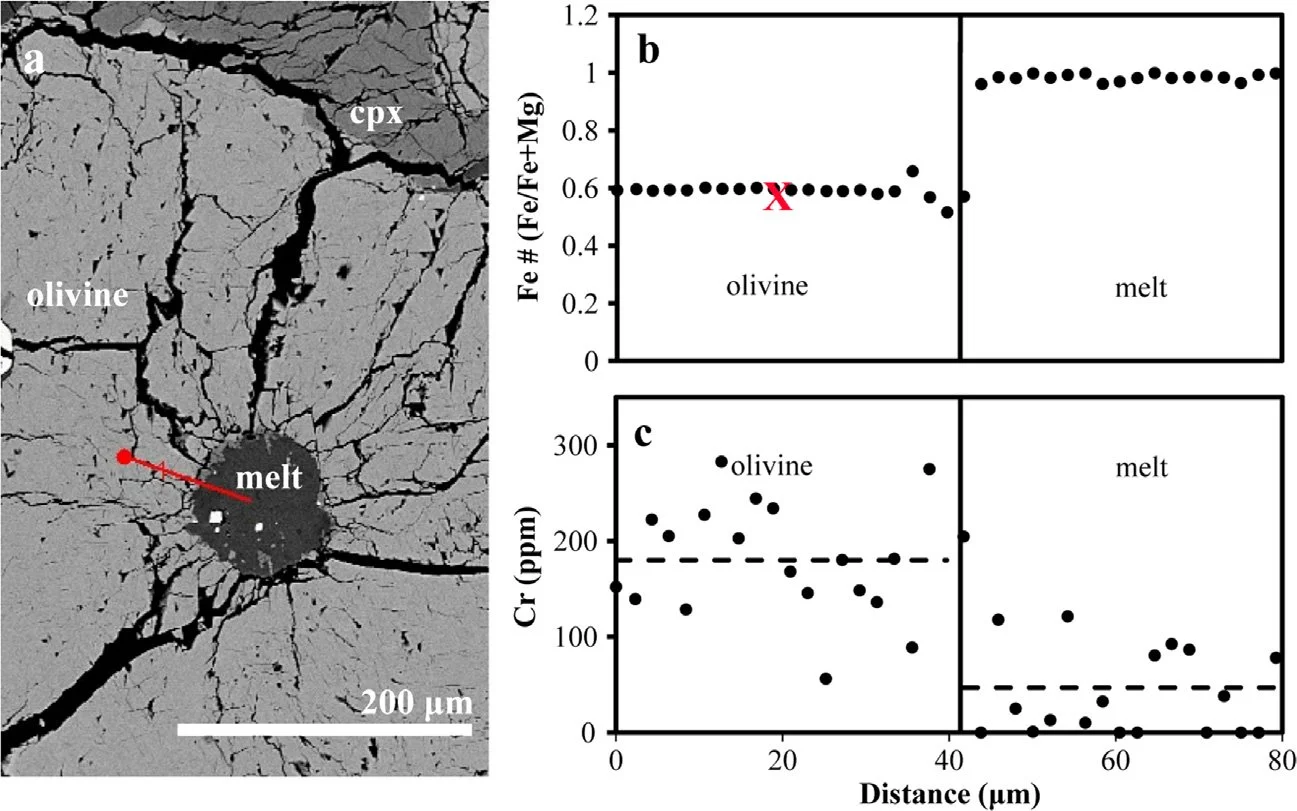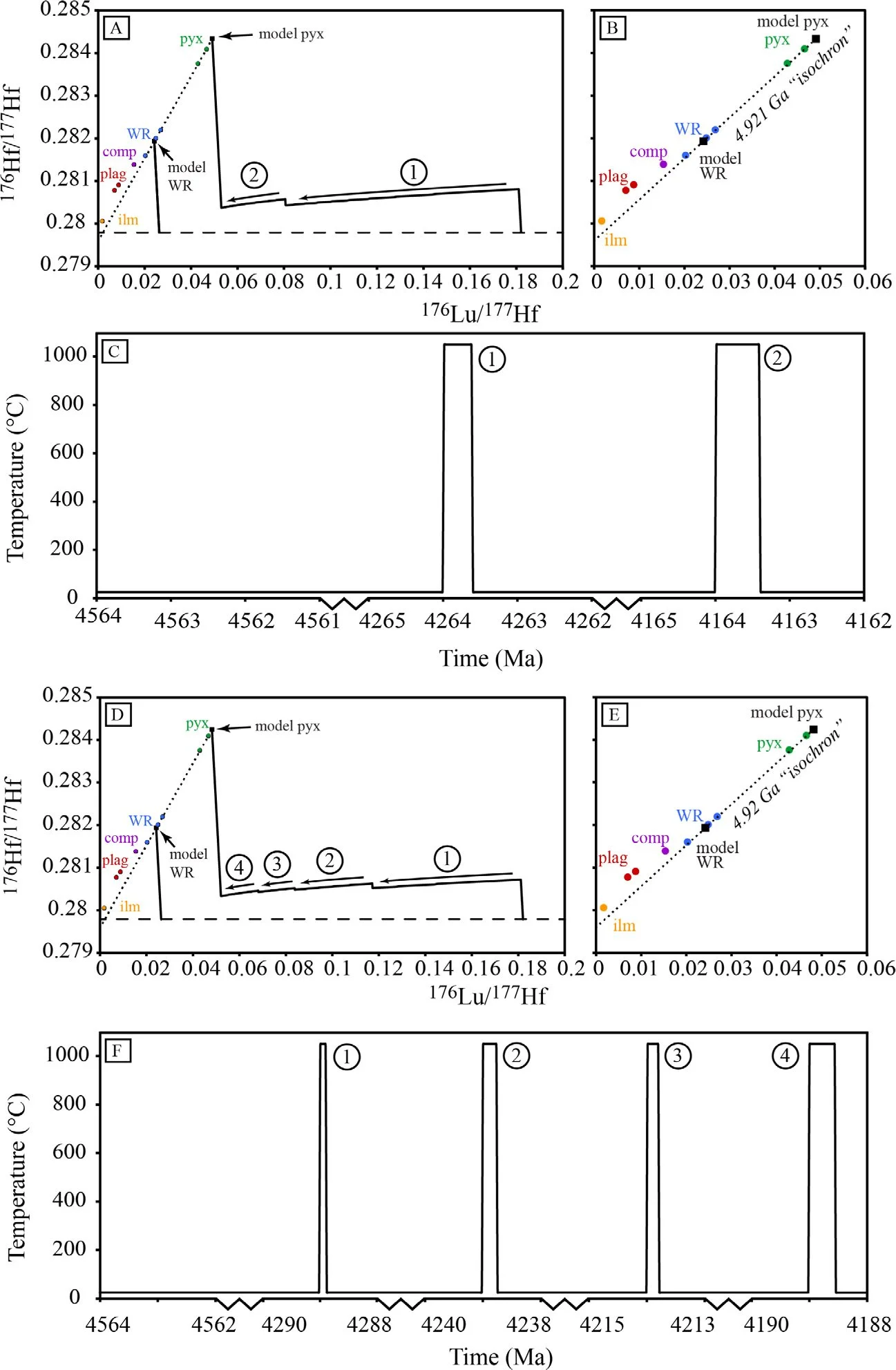Meteorite Geochronology and Petrogenesis
Although most of my work is focused on terrestrial processes, I have also steadily worked on meteorite geochronology and petrogenesis throughout my career. My early work on meteorites involved experimentally quantifying the diffusion kinetic properties of Lu and Hf in clinopyroxene, and using these data in conjunction with in-situ chemical analyses and petrographic features to construct thermal models aimed at better understanding Lu-Hf dates retrieved from both Martian meteorites and eucrites. In the case of the Martian shergottites, we examined whether diffusion due to the transient thermal effect of an impact event could be responsible for the observed relatively young Lu-Hf dates (~165-200 Ma) compared to consistently older Pb-Pb ages (>4 Ga) retrieved from the same samples (Bloch and Ganguly, 2014). Lu-Hf ages from eucrites consistently yield apparent pre-solar dates (>4.6 Ga), despite other isotopic decay systems clearly indicating that the eucrite parent body is younger than Lu-Hf dating indicates. Combining experimental data for Lu and Hf in clinopyroxene with independent estimates for the timing and duration of thermal metamorphism experienced by the eucrite parent body, we were able to show that diffusive loss of Lu can explain these anomalously old dates (Bloch et al., 2017). Currently, I am working with Stephan Gerstl and the ScopeM facility at ETH Zürich to investigate Fe-Ni metals using local electrode atom probe tomography. The abundant Fe-Ni metals in CH and CB chondrites are thought to be either condensates from the solar nebula (CH) or melt products that formed within ~6 Myr after the formation of the solar system (CB), and I suspect that these formation processes will lead to significant differences in atomic scale microstructures and Fe isotope distributions.
From Bloch and Ganguly (2014)
From Bloch et al., (2017)

